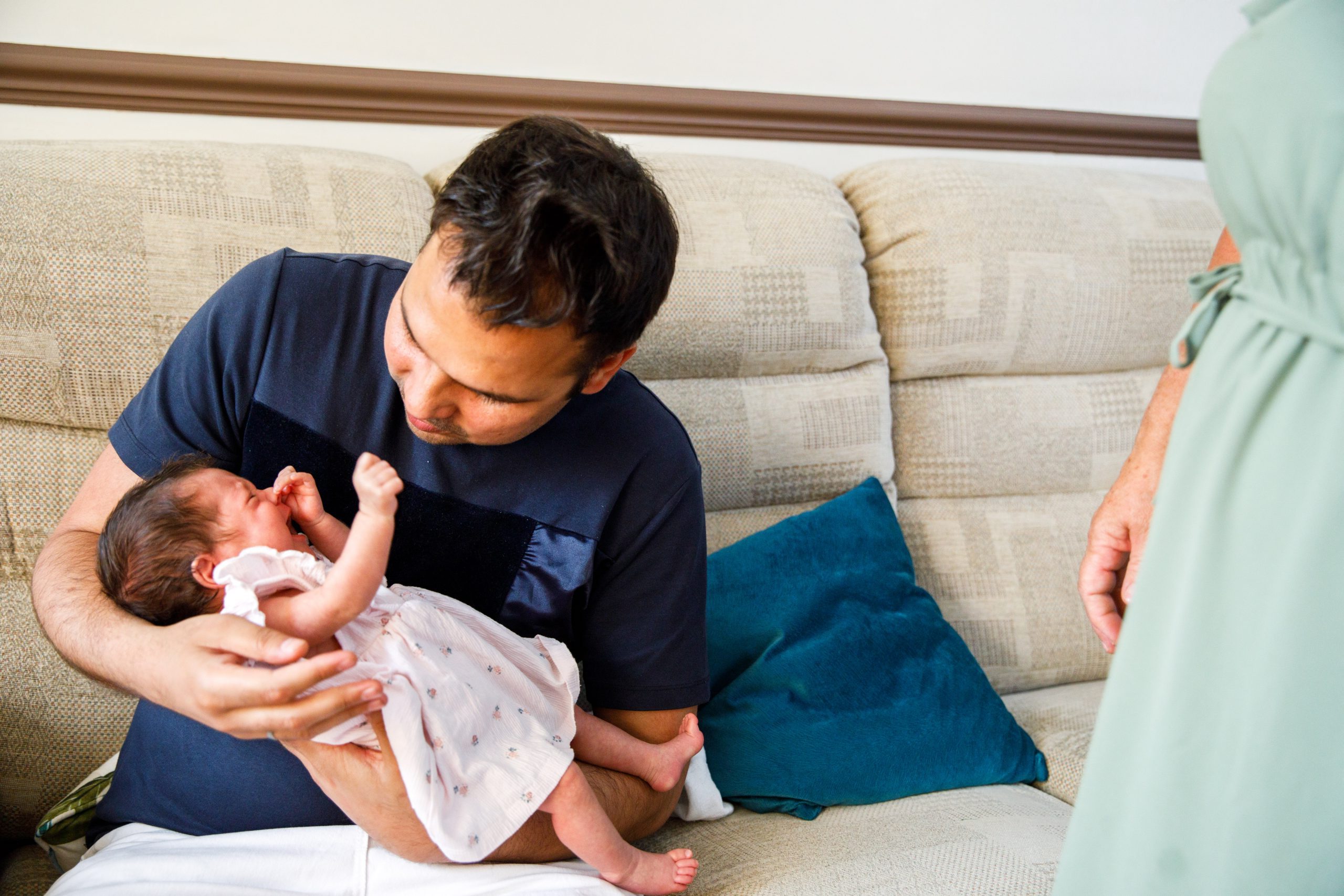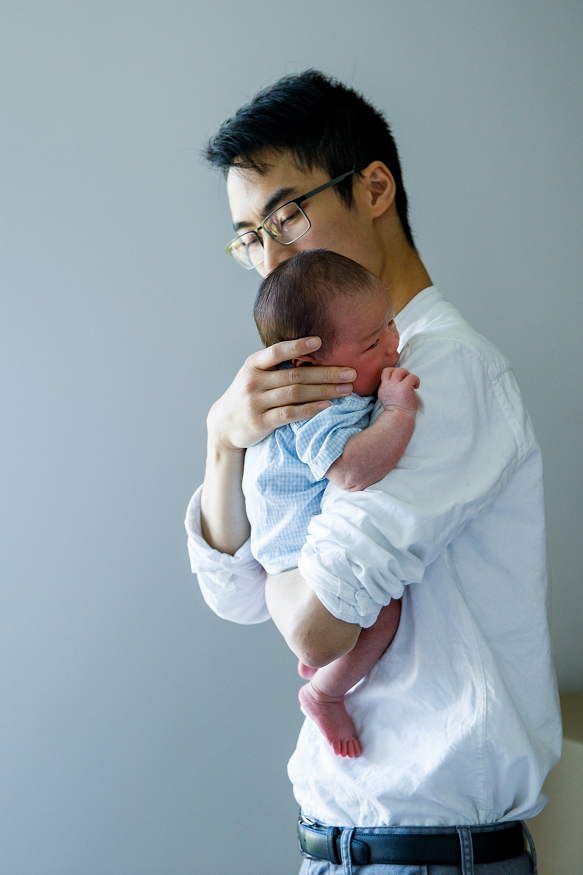Babies cry for all sorts of reasons.
As you get to know your baby you will start to recognise their different types of cries, from the frantic ‘feed me now’ cry to the less intense ‘I’m bored’ or ‘I’m tired’ cry.
Crying is your baby’s way of communicating with you and is a strong survival mechanism. It is designed to upset you and not be ignored.

Many parents do find crying hard to cope with it can have a profound effect on how you feel. It may make you worry there is something wrong with your baby.
If you are feeling low or stressed it can be much harder to bear and deal with. Never be afraid to ask for help.
We know that babies cry in the womb and being able to cry demonstrates that their brain and nervous system are working correctly.
At birth a baby’s brain is still developing and is not fully developed until they are 2 to 3 years old. Brain development continues throughout childhood and the brain reaches full adult development at 25 years of age.
This ongoing brain development can sometimes unsettle them when they are having leaps in their neurodevelopment. They may be more clingy, fussy and cry more and their sleep may be disturbed.
These unsettled periods coincide with them learning new skills and happen at different times. Sometimes these are referred to as ‘wonder weeks’.
Why your baby might be crying
It is often useful to have a checklist of reasons why your baby may be crying and work through these.
Your baby could be:
Not all crying is pain related, some of it is just their way of coping with sensory overload.
Research has shown that babies who cry a lot are healthy and normal.
Some babies do cry a lot and this crying can gradually increase from 2 weeks onwards, reaching a peak at about 1-2 months of age, and then starting decrease by the time they reach 3 months of age.
Period of Purple Crying
There is a phenomenon known as the “Period of Purple Crying” a term coined by Dr Roland Barr a world expert on infant crying.
The word PURPLE is an acronym to help parents understand the different stages of “Purple Crying” so they can recognise it.
Watch a video about the period of purple crying on the Purple Crying website.
In the past, babies who cried excessively in the first 3 months were often labelled as having colic, it was assumed they had abdominal pain or disturbance, but research has shown this to be untrue.
Only 5% of babies have a physical cause for the excessive crying. In many parts of the world this period of unsoothable excessive crying is accepted as normal and they have not tried to medicalise it.
How to stay calm when your baby is crying

It is hard staying calm when your baby is screaming. Take some deep breaths and count to 10.
Your baby needs you to stay in control and help them manage their feelings of upset.
Staying calm will help your baby to cope when they are out of control. If you have a friend or family you can call to help ring them.
If it gets too much put your baby in a safe place and take a breather – get away from the crying. Put on some music that helps you, get a drink and do anything that helps you to calm down.
Deep slow breathing is really helpful. It lowers your blood pressure and slows your heart rate down.
Once you feel calm go back and try again.
Things you can do to soothe your baby
Sometimes going out for a walk and getting outside can make it seem better and help you calm down. The noise is often not so bad outdoors rather than reverberating off the walls at home. The wind blowing leaves can mesmerise a baby. Calm yourself – it is hard to calm a baby when you are upset and stressed.
The five S’s have been shown to work well in helping calm crying babies. These stand for:
Here are some other ideas to try to soothe your baby:
The Association for Infant Mental Health have produced a ‘Get to know your baby’ video about sleeping and soothing your baby.
Simple steps to console your baby
Babies don’t always need to be picked up: sometimes just seeing your face can help them calm and settle. If you are trying to settle a baby in the cot or Moses basket the stepped approach in this video from the Association for Infant Mental Health may help.
Some things will work some of the time, but nothing works ALL of the time.
Where to get help
There are lots of organisations that can help you if you need to talk to someone one.
ICON is a programme that provides information about infant crying and how to cope
ICON stands for:
CRY-SIS is a UK online support service for coping with crying babies, and offers a 7 days a week 9am-10pm helpline: 08451 228 669. The website gives more information on coping with crying babies.
Childline website offers help if you are feeling overwhelmed. You can speak to a counsellor by calling 0800 1111 or use the 1-2-1 chat between 7.30am and 3.30am every day.
The Samaritans is charity providing emotional support to anyone in emotional distress. They are open 24 hours a day and can be contacted on 116 123 by phone or by online chat.
The Lullaby Trust website provides information about safe swaddling and the use of slings.
Institute of Health Visiting has produced a leaflet for parents about coping with a crying baby available from their website.
Your health visitor, midwife or GP can also support you if you feel overwhelmed by a crying baby.
